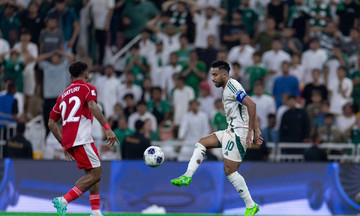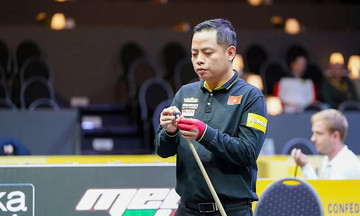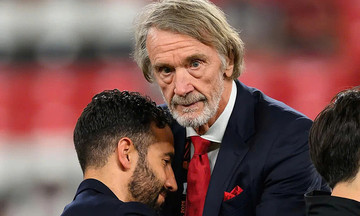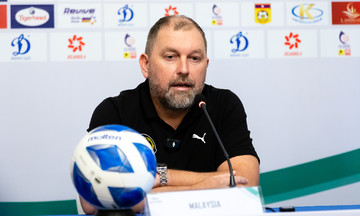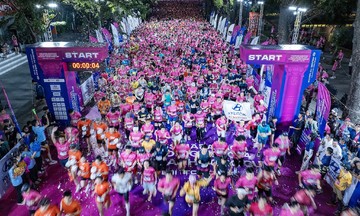What was the true cost of the 2022 World Cup?
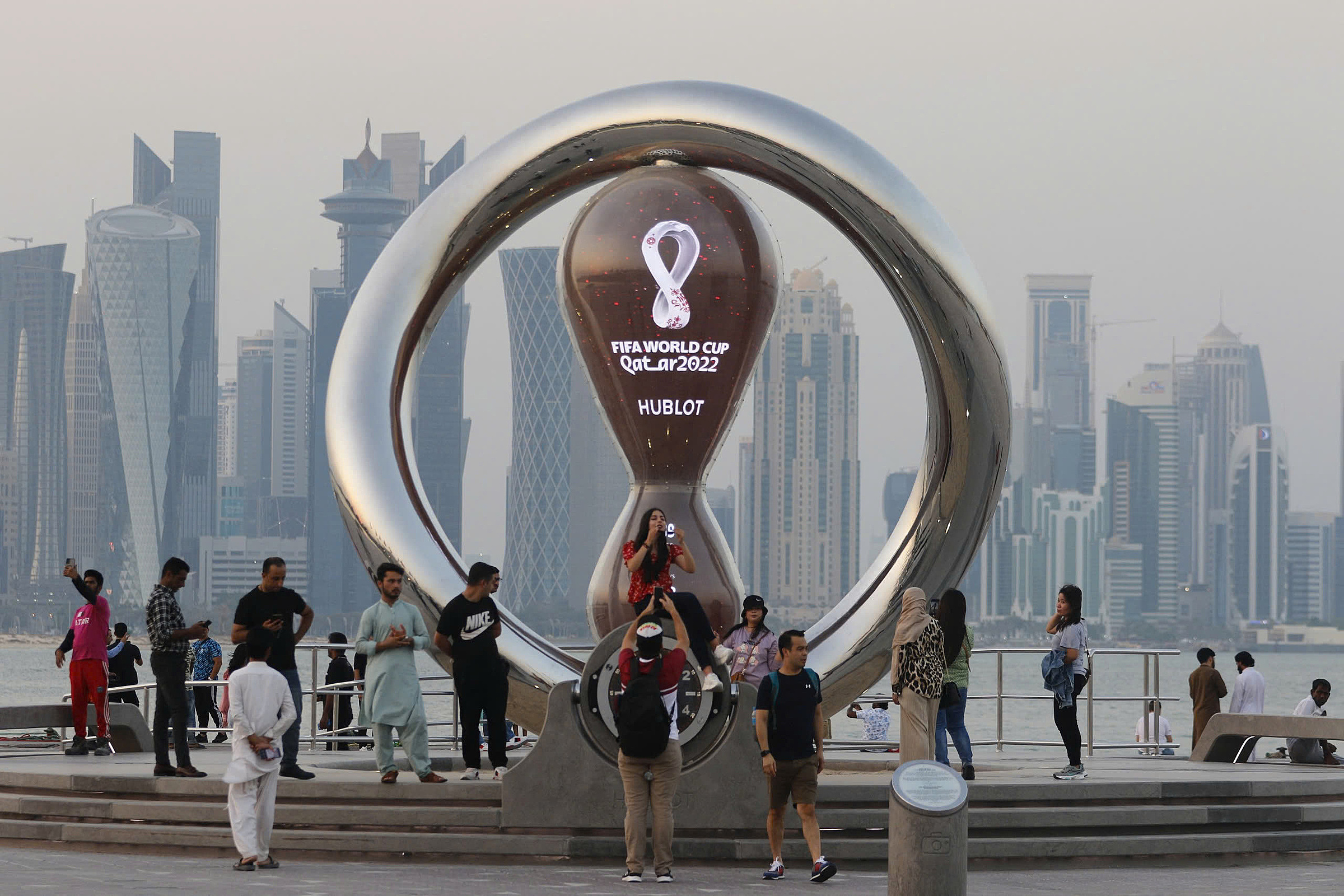 |
Countdown clock for the 2022 World Cup on 12/10/2022 in Doha, Qatar. Photo: Reuters |
Countdown clock for the 2022 World Cup on 12/10/2022 in Doha, Qatar. Photo: Reuters
At the 2022 World Cup, Qatar drew attention when it announced a cost of 229 billion USD for infrastructure over 11 years since winning the hosting rights, according to Reuters. This amount is dozens of times higher than previous World Cups, such as South Africa's 3.3 billion USD expenditure in 2010, and Brazil's 11.6 billion USD in 2014.
However, FIFA only acknowledged about 6.5 billion USD spent directly on eight stadiums, organizational facilities, and tournament-related projects. Most of the remaining enormous sum went to Qatar's Vision 2030 project, including the Doha Metro (36 billion USD), the renovation of Hamad International Airport (13 billion USD), and the city of Lusail, built almost from scratch, according to BBC Radio. The Qatari government included these projects in the "World Cup-related costs".
Should this be considered the cost of hosting the tournament, or the cost of national development, with the World Cup merely acting as a catalyst? Sports economists believe that, excluding national infrastructure, the true cost of the 2022 World Cup is only about 15 to 20 billion USD, still high but not the staggering "229 billion USD".
Remarkably, despite the huge investment, the direct profits Qatar earned from tickets, tourism, or broadcasting rights were not proportionate. The greater value lies in national branding. A small country, once criticized for its human rights record, leveraged the World Cup to present itself to the world as a global sports hub.
Barca and the Negreira refereeing scandal: Money for reports or for bribing referees?
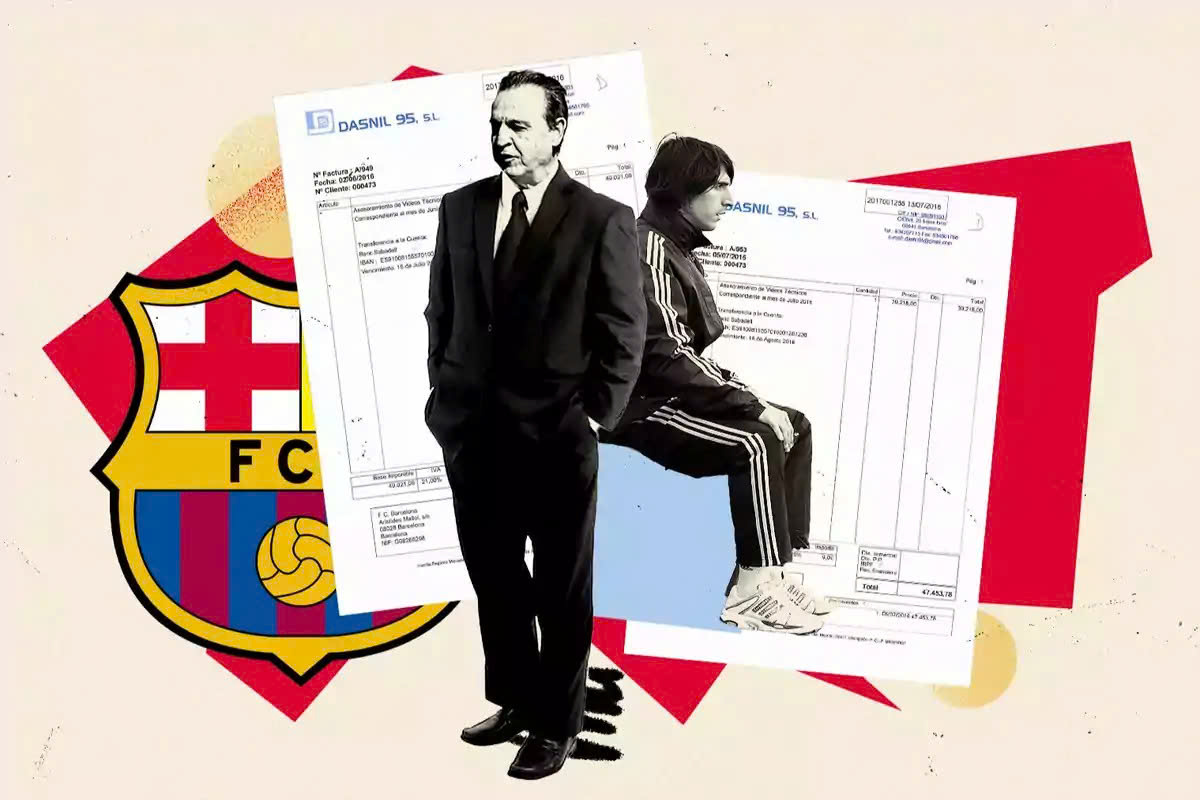 |
Barca and the scandal with referee Negreira. Photo: Madrid-Barcelona |
Barca and the scandal with referee Negreira. Photo: Madrid-Barcelona
Few scandals have rocked La Liga like the Negreira case. For 17 years, Barca paid over 8.5 million USD to DASNIL 95, a company owned by Jose Maria Enriquez Negreira, former vice president of the Technical Committee of Referees (CTA).
Barca explained that they only purchased "referee analysis reports" to help players understand refereeing tendencies and reduce on-field tension. But Spanish prosecutors argue there's no clear evidence that the company actually provided commensurate services. Invoices were issued regularly, amounting to hundreds of thousands of USD annually, but no one has found detailed documentation.
The problem lies in Negreira's position, as he had the ability to directly influence referee assignments and evaluations in La Liga. Barca denies any wrongdoing, insisting they never bribed referees. However, the club's image has been severely damaged.
After numerous investigations, there's still no final conclusion. If corruption is proven, it will be the biggest scandal in Spanish football history. If not, Barca still faces the question: Why did a powerful team regularly pay a refereeing official's company for nearly two decades?
The 2018 and 2022 World Cup host selection: What were the votes exchanged for?
 |
Opening ceremony of the World Cup on 14/6/2018 in Russia. Photo: Reuters |
Opening ceremony of the World Cup on 14/6/2018 in Russia. Photo: Reuters
The decision to award the 2018 World Cup to Russia and the 2022 World Cup to Qatar, announced in late 2010, immediately sparked suspicion. Why did two nations with little football tradition, one with limited infrastructure and the other with extreme climate, surpass England, the US, and Japan?
Lawyer Michael Garcia was appointed by FIFA to investigate. His 430-page report listed many details, such as lavish trips, dubious sponsorship contracts, and private meetings between FIFA officials and representatives of the two countries. But FIFA only released a 42-page abridged report in September 2014, under lawyer Hans-Joachim Eckert's name, concluding there was "no decisive evidence". Garcia immediately resigned, claiming the report had been misrepresented.
Later, the FBI and European investigative agencies got involved, arresting several FIFA officials for corruption. But most of the accusations focused on broadcasting rights scandals, not the World Cups in Qatar and Russia. One accusation revealed that 2.5 million USD was transferred to the 10-year-old daughter of an unnamed FIFA official.
To date, the only certainty is that the World Cup bidding process during that period was riddled with irregularities. But what the votes were exchanged for remains an unanswered question.
Man City: The mystery of 115 financial breach allegations
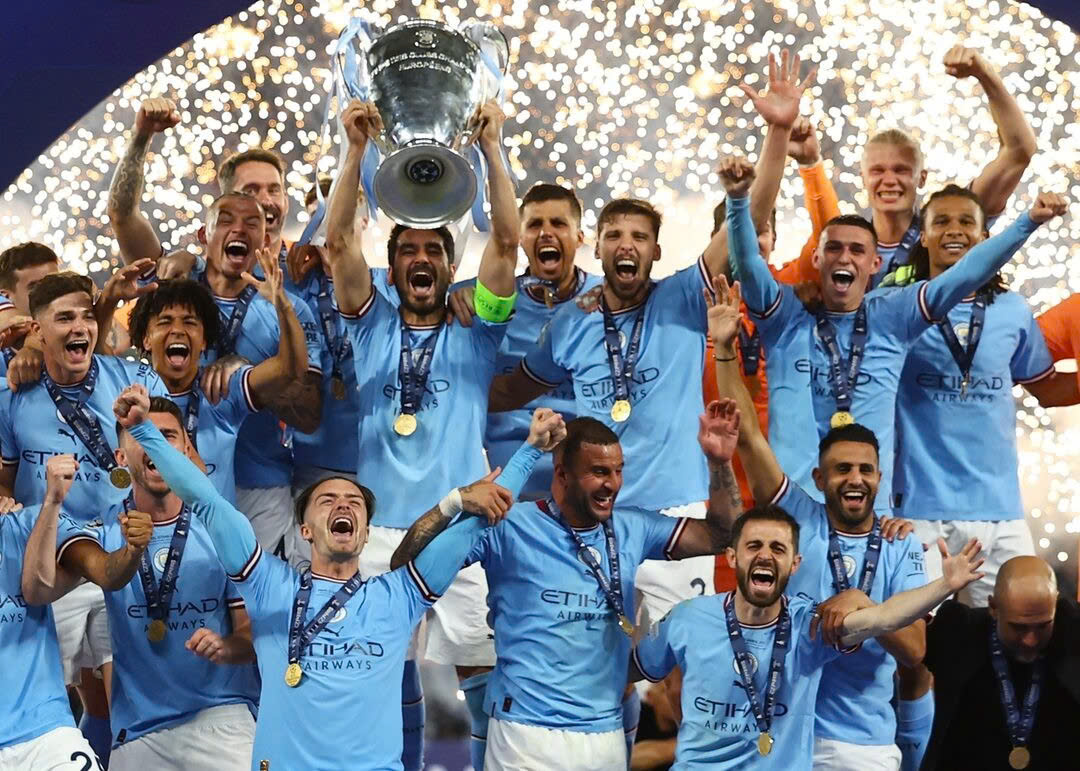 |
Man City lifts the Champions League trophy at the Ataturk Stadium, Istanbul, Turkey, on the evening of 11/6/2025. Photo: Reuters |
Man City lifts the Champions League trophy at the Ataturk Stadium, Istanbul, Turkey, on the evening of 11/6/2025. Photo: Reuters
Man City is football's new powerhouse, where financial might can transform a mid-table team into a European giant. But behind the success of the UAE-owned club are 115 financial breach allegations from the Premier League.
The allegations revolve around falsifying sponsorship revenue, concealing manager and player salaries, breaching disclosure regulations, and failing to cooperate with investigations. The focus is on sponsorship deals with companies directly linked to Abu Dhabi, the club's owner. The Premier League suspects these contracts were inflated to inject money into the club, circumventing Financial Fair Play rules.
The independent hearing in late 2024 took place in secret. No documents were made public. Man City vehemently denies any wrongdoing, claiming all operations were legal. Given the scale of the case, the ruling could affect not only Man City's titles. Other top teams could also be awarded titles if Man City is found guilty.
To date, there is no information on when a final ruling will be issued.
Was there a slush fund for the 2006 World Cup?
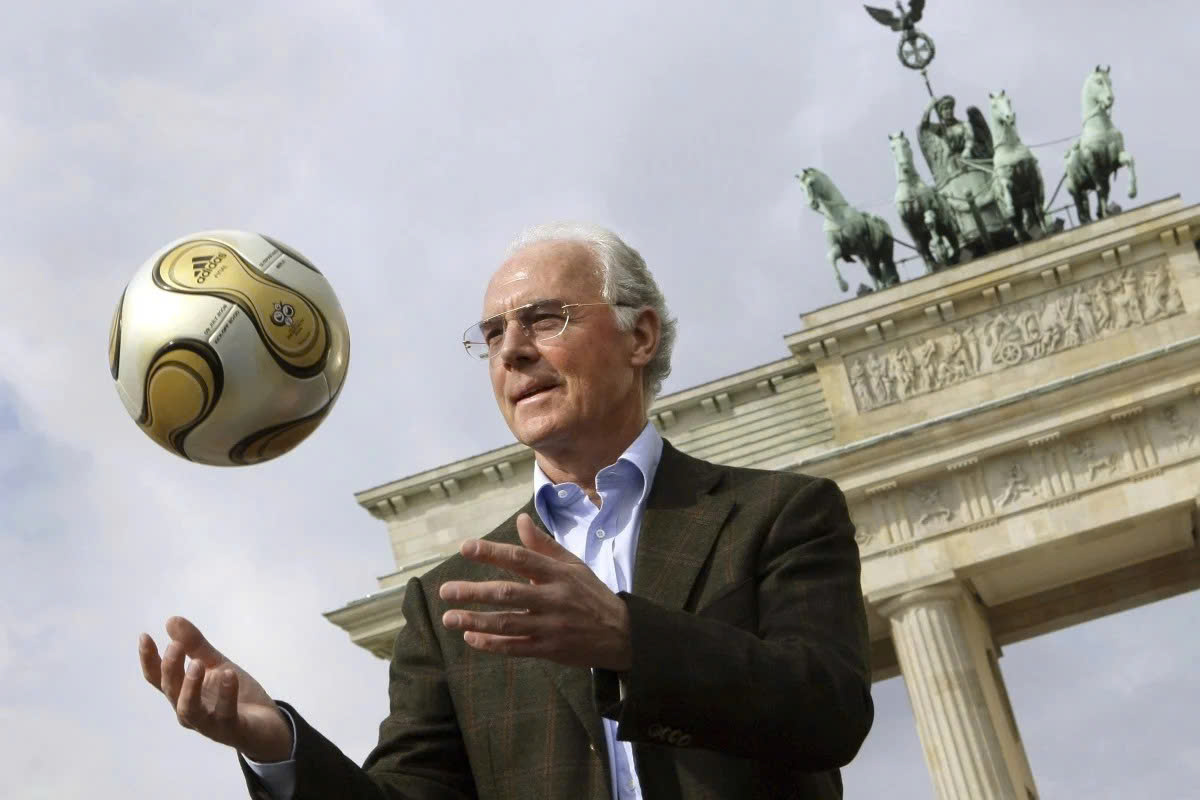 |
Beckenbauer at the presentation of the golden match ball for the 2006 World Cup finals, at the Brandenburg Gate in Berlin, Germany, in April 2006. Photo: dpa |
Beckenbauer at the presentation of the golden match ball for the 2006 World Cup finals, at the Brandenburg Gate in Berlin, Germany, in April 2006. Photo: dpa
The 2006 World Cup is known to Germans as "Sommermarchen" (summer fairy tale). But nearly a decade later, the German newspaper Der Spiegel revealed dubious funds behind the host nation's bid.
According to the investigation, the German bidding committee established a fund of approximately 12.4 million USD for unclear expenses, including 7.6 million USD from Adidas director Robert Louis-Dreyfus. Some of the money was sent to FIFA under the guise of a cultural program and then returned to the organizing committee. This circuitous transfer of funds led many to suspect it was a slush fund used to buy votes.
Senior figures like bid chairman Franz Beckenbauer repeatedly denied the allegations. At the time, the German Football Association (DFB) only admitted that the 7.6 million USD was not used for its intended purpose and was under investigation.
But key documents disappeared, and the lawsuit was dismissed due to the statute of limitations. The 2006 World Cup is still remembered as a football festival, but a layer of financial dust covers the clean image of German football.
Parallel contracts and Neymar's record-breaking transfer fee
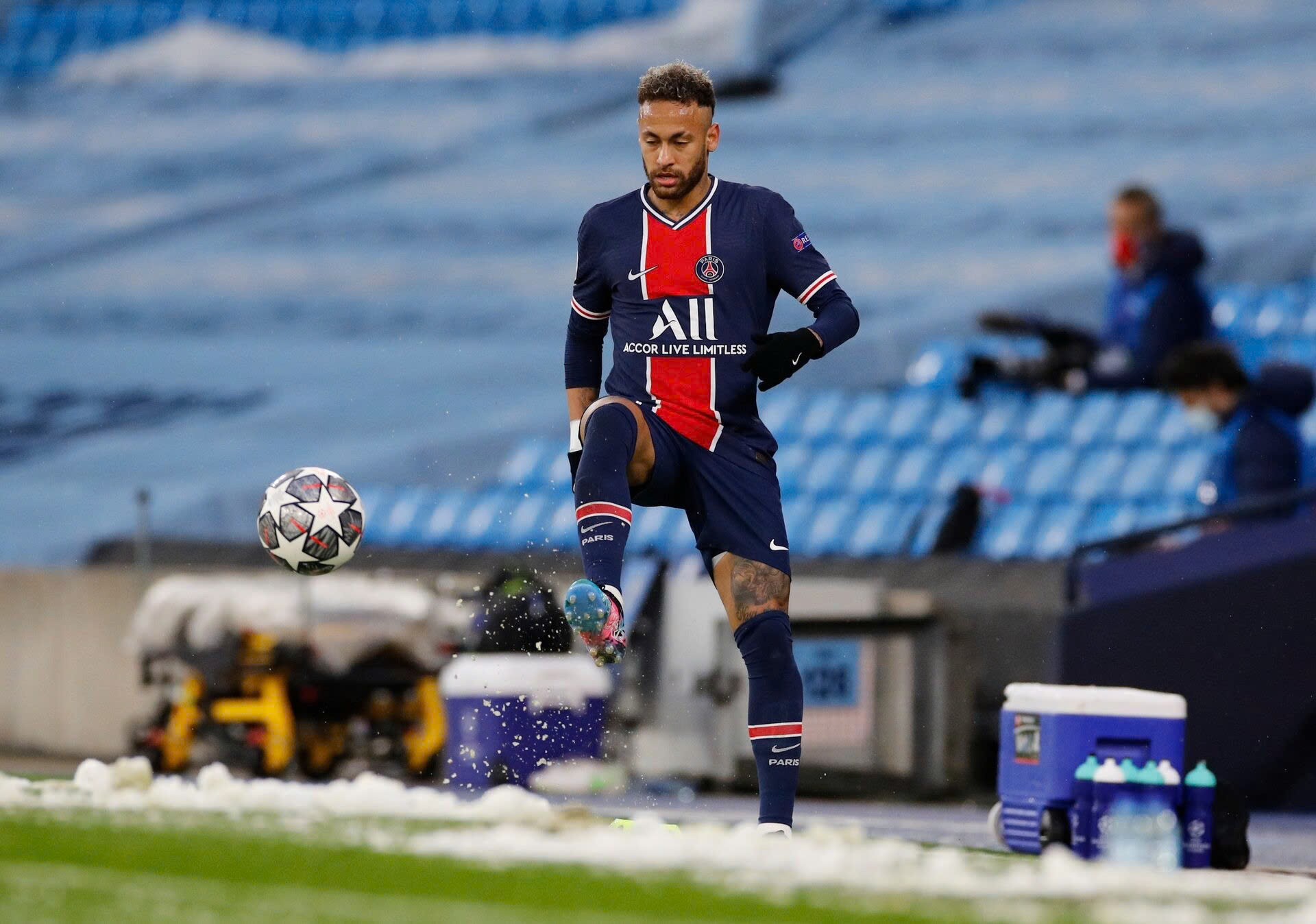 |
Neymar during the second leg of the Champions League semi-final against Man City at the Etihad Stadium, Manchester, UK, on the evening of 4/5/2021. Photo: Reuters |
Neymar during the second leg of the Champions League semi-final against Man City at the Etihad Stadium, Manchester, UK, on the evening of 4/5/2021. Photo: Reuters
Deals involving Neymar clearly illustrate the lack of transparency in football. When purchasing Neymar from Santos in 2013, Barca announced a transfer fee of 66 million USD. But after the case went to court, parallel contracts were revealed, raising the actual total to over 93 million USD.
Parallel contracts are agreements not included in Barca's financial reports, intended to persuade Neymar and his family to choose them over Real Madrid. According to Reuters, Santos only received 20 million USD in transfer fees, with the remainder going to Neymar's family.
In 2017, he became the center of attention again with a 253 million USD move to PSG, a world record to this day. Many sources believe the funds came from Qatar Sports Investments (QSI) in the form of an "inflated" sponsorship deal to circumvent Financial Fair Play rules.
Also in the summer of 2017, PSG loaned Kylian Mbappe from Monaco, with a mandatory purchase clause after one year for 210 million USD. PSG's case is somewhat similar to Man City's, with unusually high sponsorship deals.
UEFA investigated but ultimately did not impose any sanctions.
These six cases demonstrate that modern football is not only decided by tactics and goals, but also influenced by enormous sums of money. Some mysteries may never be solved due to statutes of limitations.
Compiled by Xuan Binh




